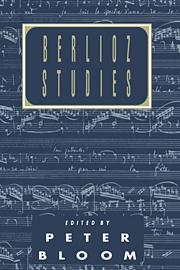Book contents
- Frontmatter
- Contents
- Preface
- List of abbreviations
- 1 The Reboul-Berlioz Collection
- 2 Berlioz and the metronome
- 3 Romeo and Juliet and Roméo et Juliette
- 4 In the shadows of Les Nuits d'été
- 5 Les Nuits d'été: cycle or collection?
- 6 ‘Ritter Berlioz’ in Germany
- 7 The Damnation of Faust: the perils of heroism in music
- 8 Berlioz's version of Gluck's Orphée
- 9 Overheard at Glimmerglass (‘Famous last words’)
- Index
5 - Les Nuits d'été: cycle or collection?
Published online by Cambridge University Press: 14 September 2009
- Frontmatter
- Contents
- Preface
- List of abbreviations
- 1 The Reboul-Berlioz Collection
- 2 Berlioz and the metronome
- 3 Romeo and Juliet and Roméo et Juliette
- 4 In the shadows of Les Nuits d'été
- 5 Les Nuits d'été: cycle or collection?
- 6 ‘Ritter Berlioz’ in Germany
- 7 The Damnation of Faust: the perils of heroism in music
- 8 Berlioz's version of Gluck's Orphée
- 9 Overheard at Glimmerglass (‘Famous last words’)
- Index
Summary
This essay addresses a critical question: is the group of songs published by Berlioz as Les Nuits d'été simply a collection of songs by one poet and one composer, or should it be called a cycle, with all that the latter term implies for our understanding of it as a whole? In this discussion broadly historical considerations, including compositional processes, must be secondary to the critical end. As it happens, information on the genesis of the songs is unusually sparse for Berlioz, and our knowledge of his intentions is even more so. My conclusion, which is intended to owe more to critical reasoning than to wishful thinking, is that Les Nuits d'été is indeed a cycle, but of a kind which may be peculiar to itself and to Berlioz.
One historical point, however, is germane to the argument and, it must be said, potentially damaging. Les Nuits d'été exists in two distinct versions. The first, composed in 1840 and published the following year, is for voice or a sequence of voices and piano; the second, of which the instrumentation was undertaken at various times, was published in 1856 for a different sequence of voices and orchestra. In discussing the orchestral version Hugh Macdonald remarks that ‘the set of six songs is not necessarily to be considered a cycle’; it is this version which makes the designation ‘cycle’ especially problematic. In 1841, the songs were set for mezzo-soprano or tenor, except No. 5 which is simply for tenor.
- Type
- Chapter
- Information
- Berlioz Studies , pp. 112 - 135Publisher: Cambridge University PressPrint publication year: 1992
- 1
- Cited by



